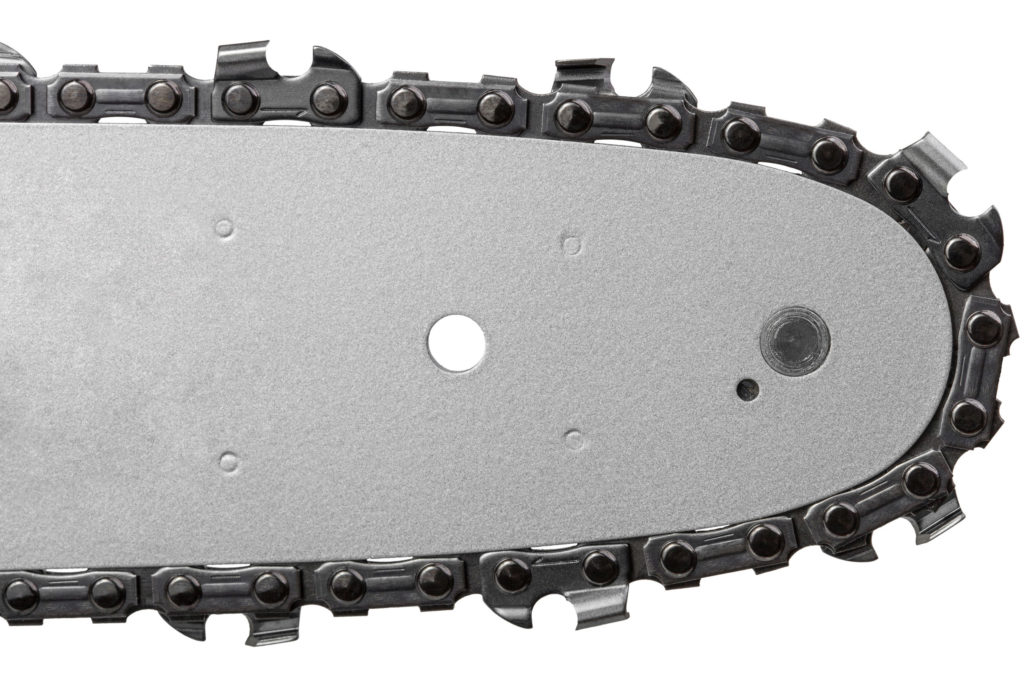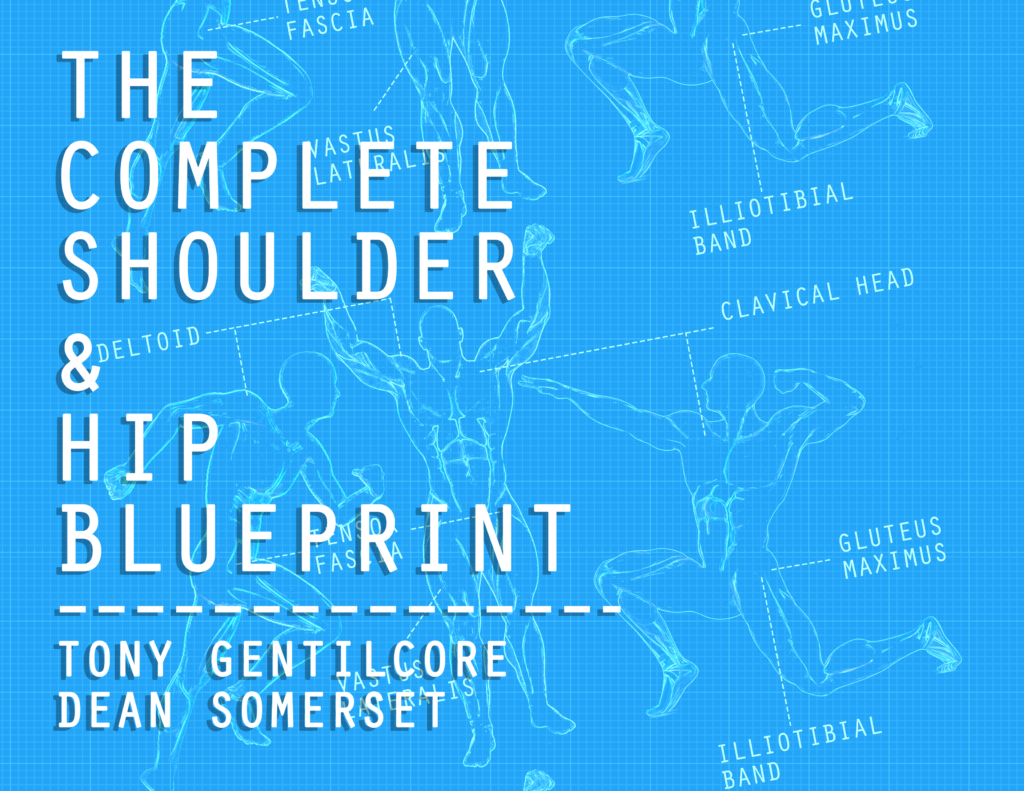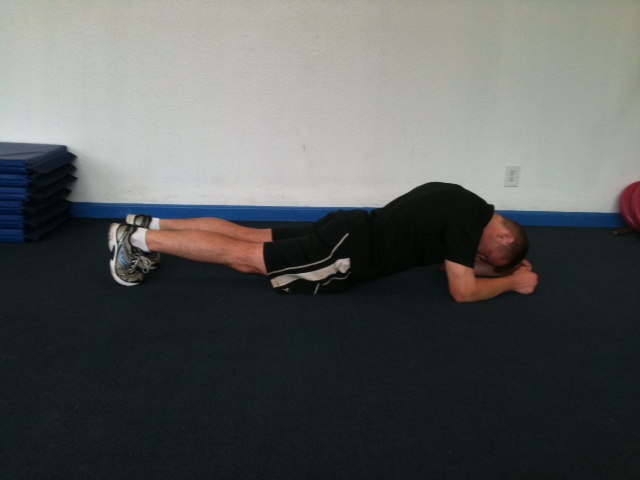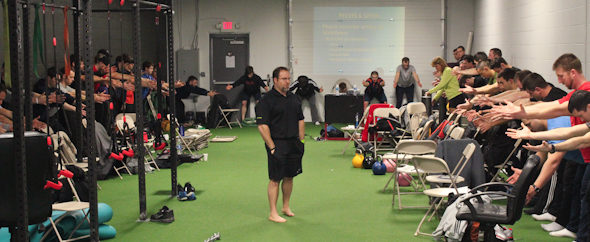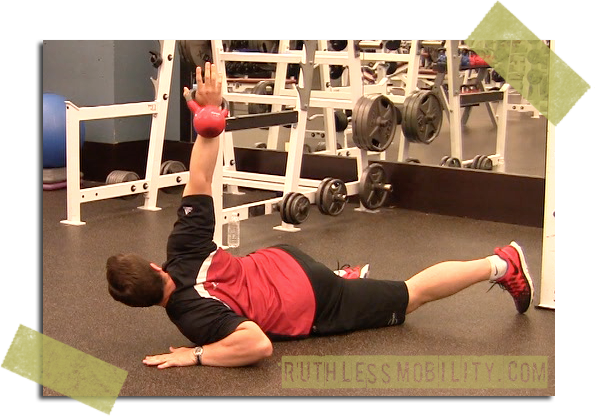Another fantastic guest post today from Shane McLean. This time he tackles the importance of unilateral strength training and offers some neat ideas as to the best accessory movements to compliment the “big 3.”
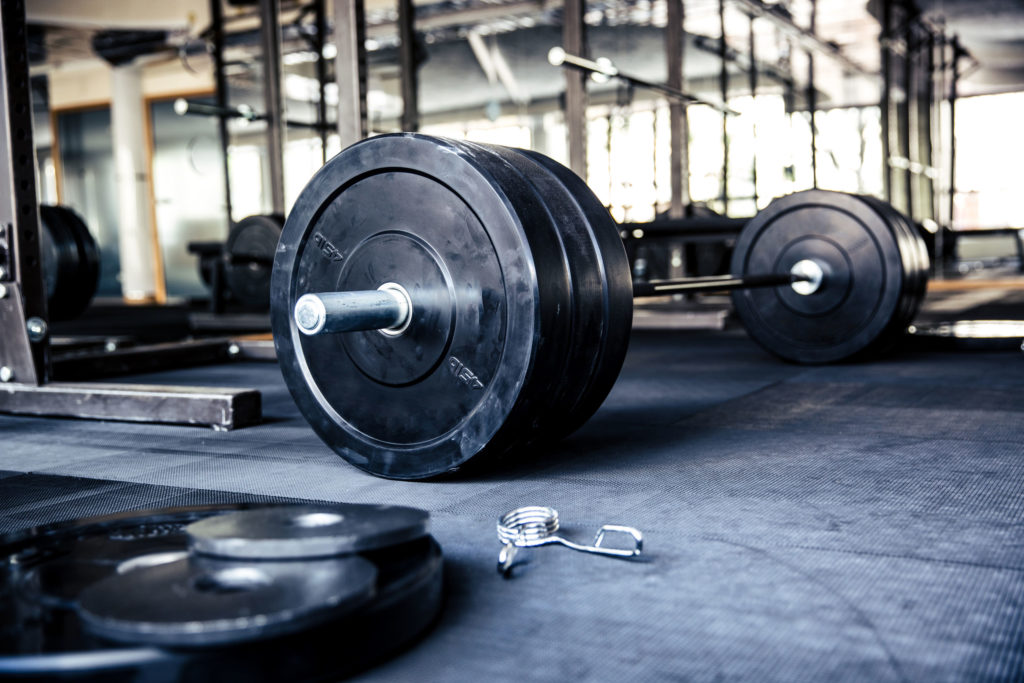
Don’t you love “that” guy who always stands between you and the dumbbells while doing single arm curls and making faces only his mother could love? What if I told you that he’s actually on to something, minus the faces and grunting?
Bilateral exercises (not biceps curls) should form the foundation of your strength program because this is where you’ll get most of your gains. However, unilateral training often gets neglected in the quest to get bigger and stronger because it’s just not as sexy (or cool) as a big squat, deadlift or overhead press.
However, unilateral training will help you get stronger, improve the big lifts (by shoring up weakness) and provide the following benefits.
Reduce Muscle Imbalances
Due to activities of daily living almost everybody has a dominant and non-dominant side. For instance, carrying more groceries on one side over the other over time may get one arm stronger.
During bilateral exercises such as a press or squat variation, your dominant side can pick up the slack for the weaker side.
Have you ever seen a lifter struggle to lock out one side over the other during a barbell bench press? I rest my case. Improving your “weaker” side will reduce your injury risk and help increase overall lifting numbers.
Improved Muscle Recruitment
Unilateral training makes you work harder and recruit more muscle fibers to perform the exact same movement, such as a split squat.
Taking one leg out of the equation forces your abductors and core to stabilize your pelvis while the working leg performs a split squat. Working more muscle with less weight will help correct strength imbalances between sides, also.
Core Work Without Crunches
When training unilaterally, you automatically throw your body off balance, forcing your core muscles to engage in order to keep yourself upright.
Trust me when I say that’s a good thing.
And we can double-down on the core training ante by utilizing offset loading:
Programming Guidelines
Unilateral exercises are best performed as an accessory movement after your big lift for the day.
Choose one or two single limb movements per session and perform three to four sets on both sides. The repetitions performed will depend on your goal.
For example:
- Strength: 4 – 6 reps
- Hypertrophy/Fat Loss: 8 – 15 reps
If you have a strength or muscle size imbalance always start with the weaker/smaller side first and let the weaker side determine the weight/reps you do on the stronger side.
Without further ado, here are my top two accessory exercises you should be doing to improve your squat, dead lift and press numbers. Sorry, this is a biceps curl free zone.
1) Deadlift
Suitcase Carries
Not only will carries change your life in three weeks, according to Dan ‘the man’ John, they can strengthen grip imbalances between hands which can be a limiting factor when pulling heavy from the floor or opening the pickle jar.
When you’re doing carries (you do, right?), pair them with a movement that doesn’t demand a lot of grip strength, so you can get more out of it. For example:
1A. Goblet squat/press variation.
1B. Suitcase carry- (25-50% of your bodyweight) 30 steps one hand then 30 steps with the opposite hand.
Form considerations – cues “shoulders down and back” or “chest up” work well here. Checking your form in a mirror will help if you having trouble knowing if you’re overcompensating or not.
Front Racked Kettlebell Bulgarian Split Squat
These were first introduced to me by Anthony Dexmier to improve my pulling ability from the floor. Let’s just say after doing them, we weren’t the best of friends.
Hardcore dead lifters knows that hip mobility, upper back strength and leg drive are essential elements for pulling heavy, and this exercise covers all those bases, if somewhat brutally.
Pairing this exercise with a single arm row variation is a real upper back whammy that you’re sure to enjoy. For example
1A. Front racked kettle bell elevated split squat – 12 reps on each leg
1B. 3 point dumbbell row – 12 reps on each arm
Form considerations – Perform a bodyweight elevated split squat and notice where your big toe is, and then place weight plate in front of it. This will give you a reference point and shorten your set up time between sets. This is courtesy of the one and only Jordan Syatt.
Keep a nice tall chest and your wrists in neutral during this entire movement and smile through the pain.
2) Bench Press
Landmine Press
The single arm landmine press is a mix between a vertical and horizontal movement which makes this great for individuals who lack the shoulder mobility for overhead pressing and for those looking to improve their press numbers.
Note From TG (to Shane): How could you not include a link to THIS article I wrote discussing how to assess overhead mobility and drills to help improve it?
Why Shane…….WHY?!?!?
The beginning of this exercise (initial push of the shoulders) is the hardest part of the movement. This will assist you with pushing the bar off your chest during the bench press or pushing the barbell overhead from a dead stop. The extra core work doesn’t go astray either.
This press can be done from a variety of positions. For example, it can be done standing, tall kneeling and this half kneeling variation courtesy of Eric Cressey:
Pairing this landmine variation with a hip flexor stretch works well and provides an active rest between sides and sets. For example
1A. Half kneeling landmine press (right hand)
1B. Half kneeling hip flexor stretch (right knee down) – 30 seconds
1C. Half kneeling landmine press (left hand)
1D. Half kneeling hip flexor stretch (left knee down) – 30 seconds
Form considerations- Make sure the barbell is close to the front of your shoulder and actively squeeze the barbell. This provides Irradiation, allowing you to produce more force and lift more weight. This also turns on the rotator cuff, which helps with shoulder stability.
Single Arm Dumbbell Floor Press
The reduced range of motion of the floor press makes this a great triceps builder (when the elbows are close to your side) and will assist you in getting stronger with the lockout part of any press variation.
The single arm variation will turn on your core and shoulder stabilizers due to the offset load that can get neglected during bench/overhead pressing. It’s a shoulder saver because it eliminates the lower half of the press where the shoulder is externally rotated and nasty things like shoulder impingements can happen.
Pairing this with a side plank or a suitcase carry gives your shoulders and core the extra work they deserve. For example
1A. Floor press
1B. Side plank variation 30 sec/ Suitcase carry – (25-50% of your bodyweight) 30 steps one hand then 30 steps in the opposite hand.
Form considerations- Grip the dumbbell tight or strangle the handle and keep the elbow close to your side but not touching. Touch the entire upper arm to the ground at the start of each rep.
3) Squat
Single Leg Negative Calf Raise
It’s a common issue to lack ankle mobility as we wear shoes that inhibit the movement of the ankles, like wearing high heels, for example. The ability to dorsiflex the ankle (how far the knees can go over the toes without raising the heel) can get compromised and this can show up in the squat.
As the squat movement has to come from somewhere, lacking dorsiflexion can negatively affect the joints further up the kinetic chain especially the knee, and who hasn’t had sore knees (and everything else) at the end of an intense squat session?
If hammering away at ankle mobility isn’t working for you, try this single leg negative calf raise drill from Dr. Ryan DeBell before your squat session. This will help with ankle dorsiflexion under load.
Form considerations- Having something solid to hold on to is a must. If you have pain bending the knee during this drill, please use a pain free range of motion. Do 5-10 reps on each leg before you squat. Your knees will thank you.
Barbell Reverse Lunge- Front Squat Grip
Most lunge variations are interchangeable because they work on knee stability (knees that go out instead of in) and core (reduced base of support) hip mobility (active stretch of the hip flexors) and help build your quad strength and size. Sounds like everything a good squat needs, right?
This variation does this and more. The front squat grip works on your anterior core upper back strength and thoracic mobility which are also needed for a strong squat.
Pairing this with an upper back or anterior core exercise in a superset works well. For example
1A. Barbell Reverse Lunge – Front Squat Grip – 8-12 reps on both legs
1B. Chin up
Or
1A. Barbell reverse lunge- Front squat grip 8-12 reps on both legs
1B. RKC Front Plank
Form considerations- Start on the light side until you nail the technique and feel confident that you’re not going to bite the floor. Keep the ears away from the shoulders and maintain an upright torso during this exercise.
Wrapping Up
Don’t forget about unilateral training when it comes to getting bigger, stronger and more awesome. Including these exercises into your routine will improve your lifting numbers and overall balance and will help keep you off the lifting DL.
You can throw in some single arm curls (for the girls) to keep Ron happy, if you must. J
Author’s Bio
Shane “The Balance Guy” McLean, is an A.C.E Certified Personal Trainer working deep in the heart of Dallas, Texas.
No, Shane doesn’t wear a cowboy hat or boots. After being told that his posture blows by Eric Cressey, he has made it his mission to rid the world of desk jockeys and have fun while doing so.
After all exercise is fun and never a “work” out.

